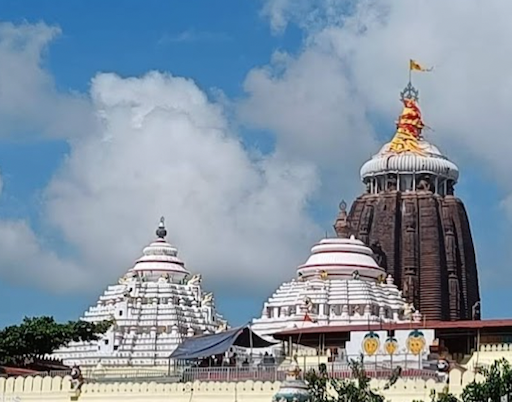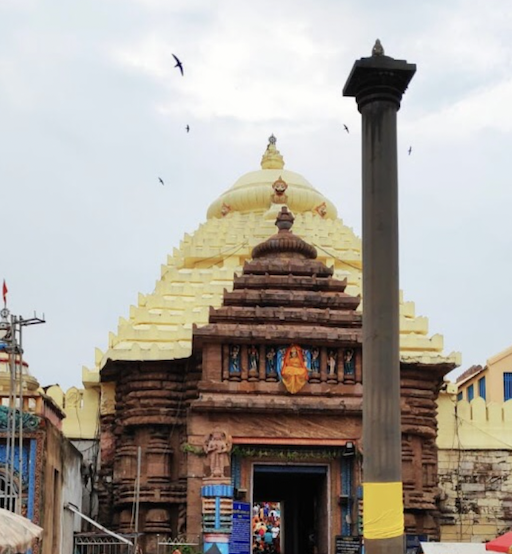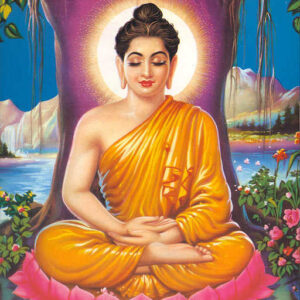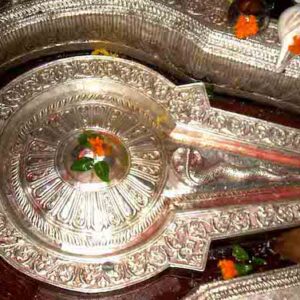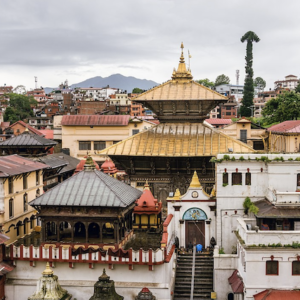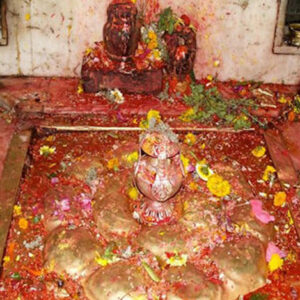This is a consecrated temple of Katyayani Devi.
There is a place to sit and meditate. You can go into meditative states here effortlessly.
How to get there:
The temple is located 2.6 kms West of Puri Bus Stand.
Map: https://maps.app.goo.gl/PSQKR7zx7TR7QnUm6
About Jagannath Temple
The Jagannath Temple is an important Hindu temple dedicated to Jagannath, a form of Vishnu – one of the trinity of supreme divinity in Hinduism. Puri is in the state of Odisha, on the eastern coast of India. King Indradyumna of Avanti has built the main temple of Jagannath at Puri.[1] The present temple was rebuilt from the tenth 10th century onwards, on the site of pre-existing temples in the compound but not the main Jagannatha temple, and begun by Anantavarman Chodaganga, the first king of the Eastern Ganga dynasty.[2] many rumours are spread about the temple but there is no solid proof of it.[3] The temple is one of the 108 Abhimana Kshethram of Vaishnavate tradition.
The Puri temple is famous for its annual Ratha Yatra, or chariot festival, in which the three principal deities are pulled on huge and elaborately decorated temple cars, Worship is performed by the Bhil Sawar tribal priests as well as priests of other communities in the Jagannath temple.[4] Unlike the stone and metal icons found in most Hindu temples, the image of Jagannath is made of wood and is ceremoniously replaced every twelve or 19 years by an exact replica.[5] It is one of the Char Dham pilgrimage sites.The puri temple is also famous because many legends believe that Krishna’s heart was placed there and the material that it is made from damages the heart so they have to change it every seven years.[6]
The temple is sacred to all Hindus, and especially in those of the Vaishnava traditions. Many great Vaishnava saints, such as Ramanujacharya, Madhvacharya, Nimbarkacharya, Vallabhacharya and Ramananda were closely associated with the temple.[7][8] Ramanuja established the Emar Mutt near the temple and Adi Shankaracharya established the Govardhan Math, which is the seat of one of the four Shankaracharyas. It is also of particular significance to the followers of Gaudiya Vaishnavism, whose founder, Chaitanya Mahaprabhu, was attracted to the deity, Jagannath, and lived in Puri for many years.[9][10]
History
The temple was rebuilt by the Ganga dynasty king Anantavarman Chodaganga in the 10th century CE, as suggested by the Kendupatna copper-plate inscription of his descendant Narasimhadeva II.[11] Anantavarman was originally a Shaivite, and became a Vaishnavite sometime after he conquered the Utkala region (in which the temple is located) in 1112 CE. A 1134–1135 CE inscription records his donation to the temple. Therefore, the temple construction must have started sometime after 1112 CE.[12]
According to a story in the temple chronicles, it was founded by Anangabhima-deva II: different chronicles variously mention the year of construction as 1196, 1197, 1205, 1216, or 1226.[13] This suggests that the temple’s construction was completed or that the temple was renovated during the reign of Anantavarman’s son Anangabhima.[14] The temple complex was further developed during the reigns of the subsequent kings, including those of the Ganga dynasty and the Gajapati dynasty.[15]
Deities
Jagannath, Balabhadra and Subhadra are a trio of deities worshipped at the temple. The inner sanctum of the temple contains the deities of them carved from sacred neem logs known as daru sitting on the bejewelled platform or ratnabedi, along with deities of Sudarshana Chakra, Madanmohan, Sridevi and Vishwadhatri.[16] The deities are adorned with different clothing and jewels according to the season. Worship of these deities pre-dates the building of the temple and may have originated in an ancient tribal shrine.[17]
Legends
According to legend, the construction of the first Jagannath temple was commissioned by King Indradyumna, son of Bharata and Sunanda, and a Malava king, mentioned in the Mahabharata and the Puranas.[18]
Indradyumna’s prayer to Brahma
King Indradyumna put up for Jagannath the tallest monument of the world. It was 1,000 cubits high. He invited Brahma, the cosmic creator, consecrate the temple and the images.[19]
Legend surrounding the Temple origin
The traditional story concerning the origins of the Jagannath temple is that here the original image of Jagannath (a deity form of Vishnu) at the end of Dvapara yuga manifested near a banyan tree, near seashore in the form of an Indranila mani or the Blue Jewel. It was so dazzling that it could grant instant moksha, so the deity Dharma or Yama wanted to hide it in the earth and was successful. In Kali Yuga King Indradyumna of Malwa wanted to find that mysterious image and to do so he performed harsh penance to obtain his goal. Vishnu then instructed him to go to the Puri seashore and find a floating log to make an image from its trunk.[20][21]
The King found the log of wood. He did a yajna from which Yajna Nrisimha appeared and instructed that Narayana should be made as fourfold expansion, i.e. Paramatma as Vasudeva, his Vyuha as Samkarshana, Yogamaya as Subhadra, and his Vibhava as Sudarsana. Vishwakarma appeared in the form of an artisan and prepared images of Jagannath, Balarama and Subhadra from the tree.[22]
When this log, radiant with light was seen floating in the sea, Narada told the king to make three deities out of it and place them in a pavilion. Indradyumna got Visvakarma, the architect of gods, to build a magnificent temple to house the deities, and Vishnu himself appeared in the guise of a carpenter to make the deities on condition that he was to be left undisturbed until he finished the work.[20][23]
But just after two weeks, the Queen became very anxious. She took the carpenter to be dead as no sound came from the temple. Therefore, she requested the king to open the door. Thus, they went to see Vishnu at work at which the latter abandoned his work leaving the deities unfinished. The deity was devoid of any hands. But a divine voice told Indradyumana to install them in the temple. It has also been widely believed that in spite of the deity being without hands, it can watch over the world and be its lord. Thus the idiom.[20][23]
Source:
